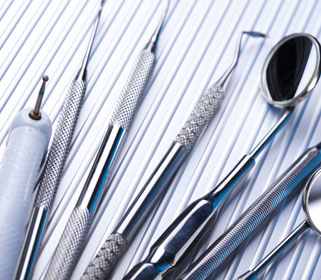Home » Medical Supplies & Equipment » Diabetic Diet Fast Facts » Diabetic Diet Fast Facts
Diabetic Diet Fast Facts
The term diabetic diet is a bit of a misnomer, it is not really a diet per say but rather an approach to eating that helps blood sugar regulation and overall good health. Many people that have diabetes use the glycemic index (GI) as a tool to determine foods that are acceptable and foods to avoid. In general foods with a low GI are not going to impact blood sugar levels as much as foods with high GI values. Typically the high GI values correspond to high carbohydrate and high caloric foods, although this is not always the case. Researchers disagree on the effectiveness of the GI diet for diabetics since combinations of foods can create synergistic effects on blood glucose levels which cannot be determined by looking at each food item individually.
Typically most people follow the food guidelines developed by the American Diabetes Association, often called the diabetic diet. In fact the correct terminology for following a balanced diet after a diagnosis of diabetes is medical nutritional therapy or MNT for short. Many nutritionalists and dieticians are trained in MNT and assisting diabetics or those with prediabetes in developing a customized diet plan that works with their blood glucose response.
The following are the essentials of the diabetic diet as outlined by the American Diabetes Association, the Canadian Diabetes Association and the British Diabetic Association.
Fiber Rich Foods:
Dietary fiber, which is most commonly found in plants, is an excellent addition to the diet for anyone, including those with prediabetes or a diagnoses of Type 1, Type 2 or gestational diabetes. This is because the addition of fiber helps to slow down digestion, stopping the huge dump of blood sugar immediately after a meal. In addition fiber helps you feel full, lowers bad cholesterol levels in the body and helps with overall digestion and waste elimination.
Excellent sources of fiber include green leafy vegetables, nuts, whole fruits, whole gains, beans, peas and lentils. Fruit juices, processed foods and white flour products are low in fiber and should be avoided because they have high sugar and high "bad" carbohydrate values.
The Best Carbohydrates:
Carbohydrates are an essential part of daily food intake and cannot be eliminated from a healthy, balanced diet. Eating the good forms of carbohydrates and avoiding or limiting the bad options is a good way to add to the variety of foods you consume. Nuts, fruits, vegetables and whole grains are excellent sources of the best carbohydrates. You can also include all types of beans, peas and lentils to add both carbs and fiber. Low fat or no fat dairy products such as fat free milk, cheese, cottage cheese and yogurt are also great sources of carbohydrates.
Fats For Health:
Fats provide energy for the body as well as essential building blocks to many metabolic processes. Good fats, those that are monounsaturated or polyunsaturated are the best to enjoy in limited amounts. These include olive oils, canola peanut oil, olives, walnuts, almonds, pecans and small amounts of avocado.
Avoid all fats that include saturated or trans fats, high fat dairy products or animal proteins or anything that is high in cholesterol. Foods high in cholesterol can include shellfish, egg yolks and organ meats.
Portion control is also important as is knowing how to combine the building blocks of fats, carbohydrates and fibers to create a healthy balanced diet. Diabetic cookbooks, online resources and your nutritionalists can help you develop a diet that works for you and includes the foods you enjoy.













